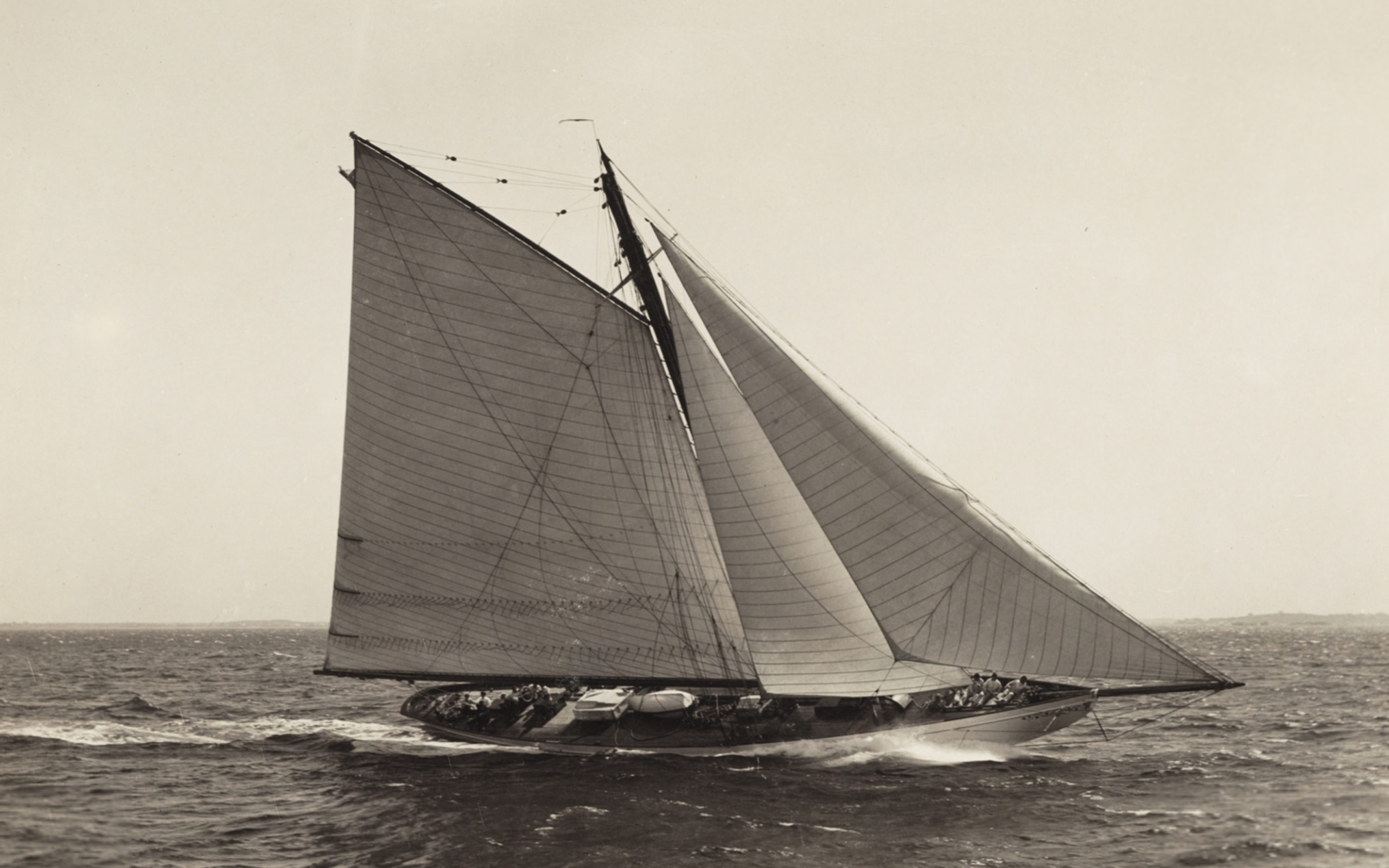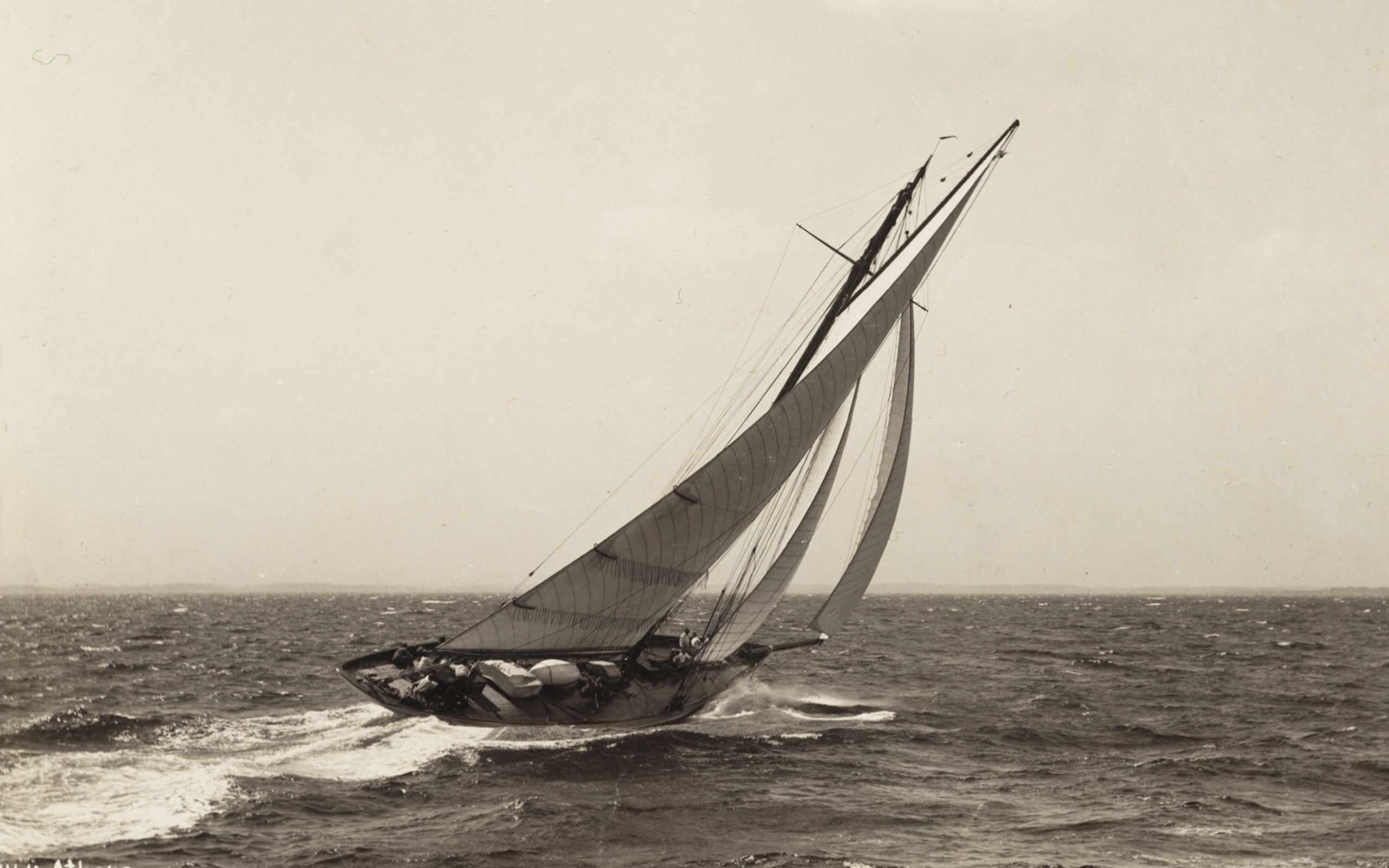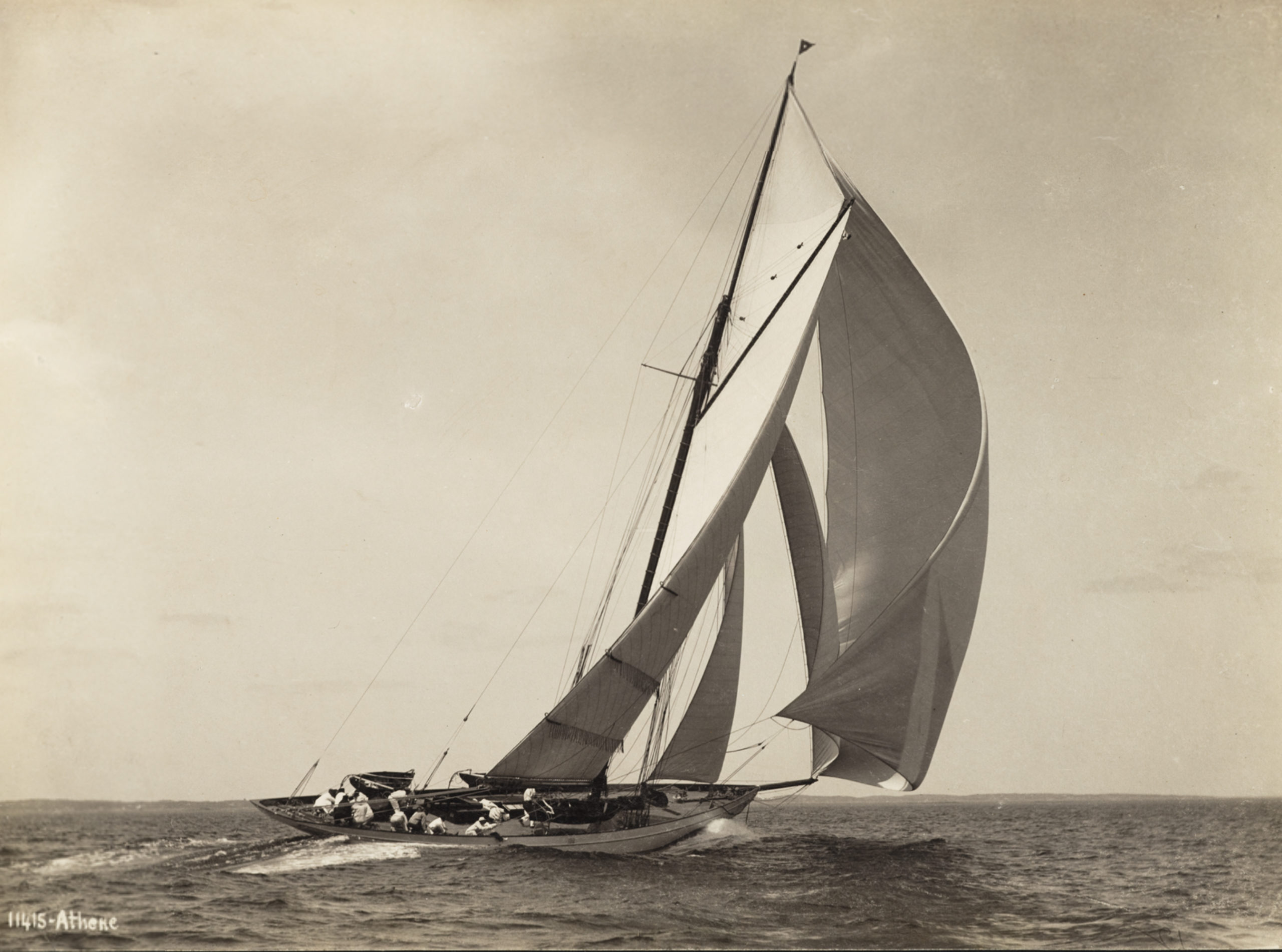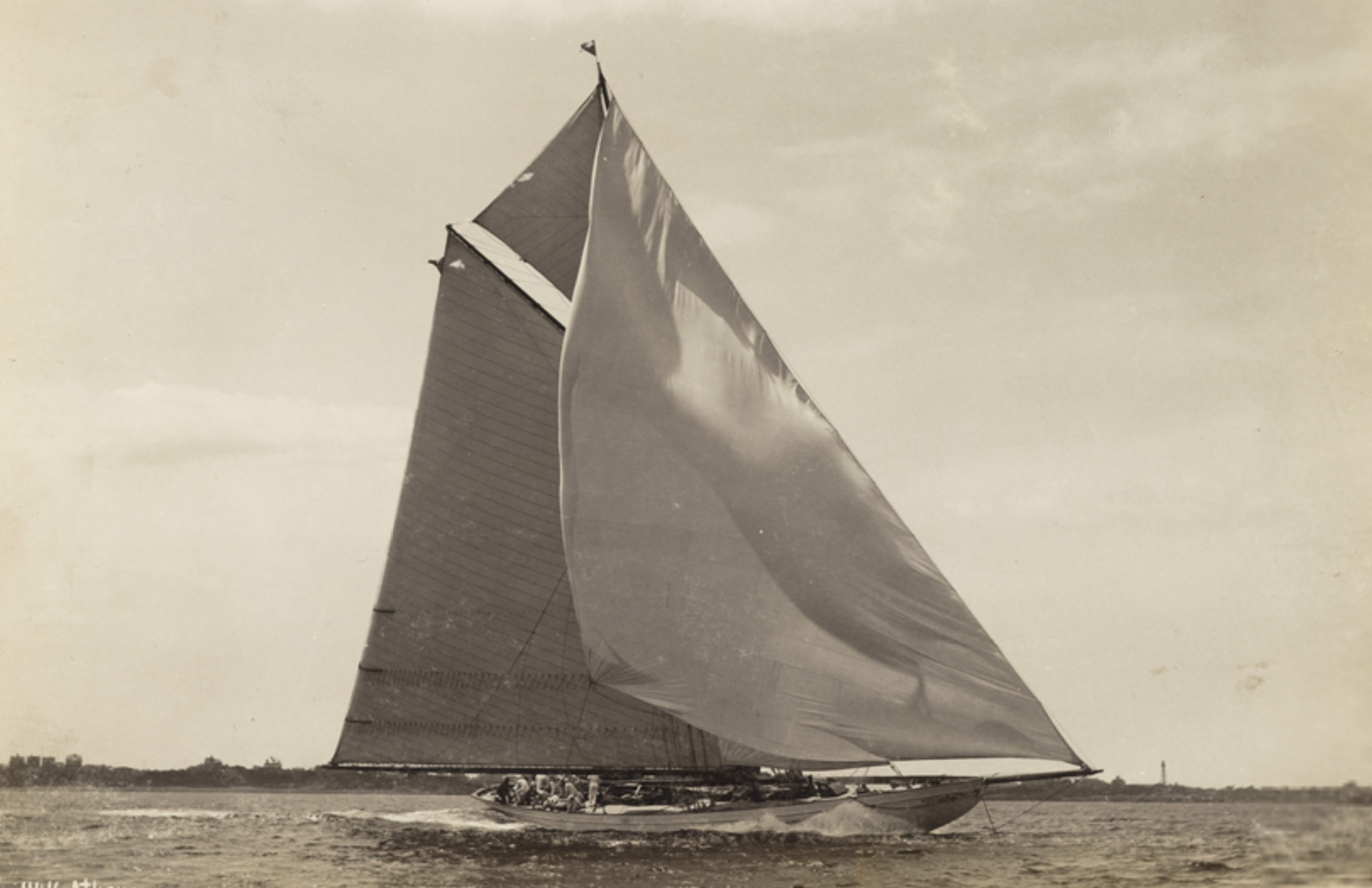June 23, 2022
From the Vault: ATHENE, Part II
A Honeymooner Makes it in Hollywood (and then some!)
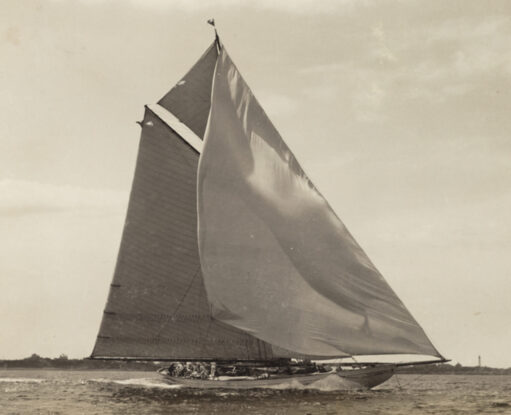
Introduction
Last month's "From the Vault" post covered the design and construction of the 106' LOA cruising yacht ATHENE (HMCo. #520) in 1899; click here to read that post if you missed it! This month we pick up after ATHENE's October 1899 delivery to her first owner in Marblehead, MA...

The Boston Years
As it turned out, ATHENE did not stay away from Bristol for very long. On June 25, 1900 - what should have been the beginning of a prime New England summer, and her first real sailing season - ATHENE was back at HMCo. hauled on the marine railway. The next day, Captain Nat reported in his diary: "Tue 26: Fine [with] mod[erate] S [wind]. ... Athene launched after adding 2-1/2 tons lead to keel, & sailed..."
What was this all about? ATHENE's owner W.O. Gay was trying to keep up with the brand new one-design class that had taken shape the winter of 1899-1900: the New York 70s. Gay said as much to a Bristol Phoenix reporter shortly after ATHENE's launch in October 1899: "I am highly pleased with her, and I am anticipating much pleasure in cruising next season. She was not built for speed primarily, but you know the Herreshoff's never build a slow boat, and I feel sure she will be fast, though she has not been tried yet I shall not hesitate to enter her in the races of the New York Yacht Club next season, even against the 70-footers of the one-design class which Herreshoff is to build this winter for New York yachtsmen." While ATHENE shared many of her principal dimensions with the 70s, she drew 2'2" less - a significant difference when it came to competitive racing. Changes were also made to ATHENE's rig on this June visit to HMCo. in 1900, but there was only so much that could be done to make this centerboard cruiser conform to the NY70 class.
Despite any "fear of missing out" possibly indicated by such an early refit, Gay got a better deal than the NY70 owners in the end. Over the course of their first season in the summer of 1900, the four NY70s (MINEOLA, RAINBOW, VIRGINIA & YANKEE) proved to be one of HMCo.'s most publicized failures. They were raced hard by their owners, and the wooden-planked hulls combined with the long overhangs prompted by the prevailing Seawanahaka racing rule just couldn't stand up to the strain; they quickly earned the nickname "the leakabouts" in the yachting press. Though the 70s cost more than ATHENE, ($32,593.75 vs. $27,125.00) by the end of their first season they were already back at HMCo., hauled on the marine railway not for elective surgery like ATHENE, but for a hugely laborious retrofit intended to strengthen their hulls after only a few months of racing! But even these hull-strengthening interventions were not enough, and the 70 class was abandoned after just a few years. ATHENE, by contrast, required no such retrofit and went on to have - as we shall see - a long world cruising career.

Though she proved to be a very different animal from the NY70s, ATHENE did still have some noteworthy racing experiences, and one in particular was just four days after the June 25-26 visit to HMCo. for the rig modifications and added ballast. L. Francis described this insane drag race in "The Wizard of Bristol": "This was the Puritan Cup Race off Marblehead on June 30, 1900. It blew a living gale from the northwest that day, and when it was time to start, only six yachts showed up with no competitor for the hundred and seven foot water line 'Constellation' in the schooner class, so the Regatta Committee started her with the sloops and the race turned out to be a knockdown, drag-out contest between 'Constellation' and 'Athene.' The first leg of the course was from Marblehead to the buoy off Minot's Light, and 'Constellation' going down wind wing and wing with her hundred and seven feet of water line left 'Athene' behind. The next leg was close hauled to Graves' Whistler and 'Athene' passed 'Constellation,' rounding the buoy several minutes ahead. The last leg was a reach back to Marblehead, and 'Constellation' drew ahead again. Twice around the course they went, thirty miles in a howling northwest gale. 'Constellation' parted a halyard and 'Athene' broke her gaff jaw but they carried on and finished with 'Athene' winning seven minutes boat for boat and twenty-four minutes corrected time. As 'Athene' approached the finish line she got a heavy knockdown and became partly unmanageable. Although her topmast was housed and she was under jib and mainsail, the water came way up to her hatches; they could not get at the jib sheets to let her up in the wind and had to chop them with an ax. There was a remarkable photograph taken of 'Athene' in this race, and no doubt some of the readers have seen it at the Eastern Yacht Club. Although this race was half a century ago, I occasionally talk to two of 'Athene' 's crew in that remarkable race. One of them is Llewellyn Howland of Padenarum [sic], who was in the afterguard, and the other is Jonathan Mason of Marblehead who was mastheadsman on 'Athene.'" Nathaniel Stebbins was out with his camera that day and captured the dramatic conditions in five photos that are viewable online through the Historic New England Stebbins Collection. The crew must have been glad of the freshly added 2 1/2 tons of lead!
Click on the images at left for high resolution viewing on the HNE website.
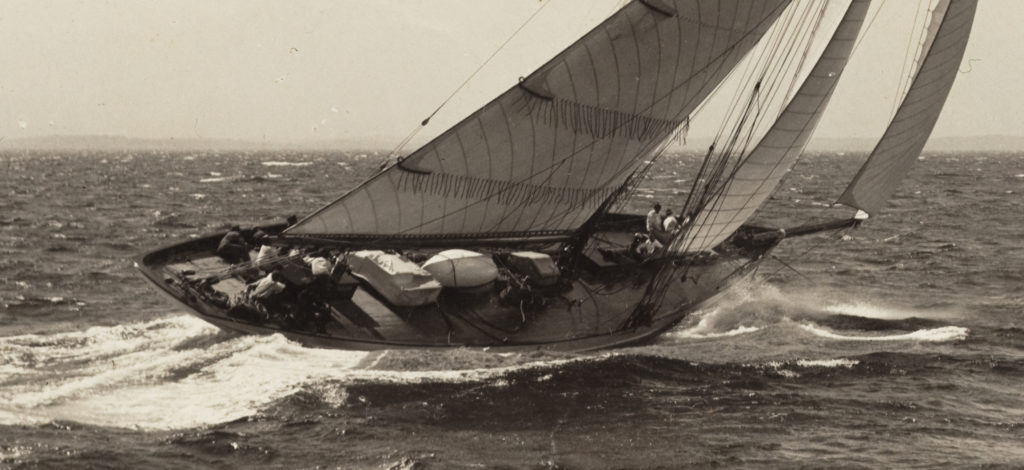
A Historic Passage

W.O. Gay owned ATHENE until 1909, when she sold to T.P. Burgess. (There is little documentation in the HMM archive from 1909-1914, but we are always looking for more, if there are any Burgess relatives out there!) Five years later ATHENE sold again, this time to Carlton E. Miller - a newly-married, soon-to-be west coast transplant - and so began ATHENE's serious world cruising chapter. Rudder Magazine ran an article on the trip from east to west in May 1915:
"HO for Adventure and Romance! A brave New England girl and two Yale graduates have captured the honor of taking the first sailing yacht through Uncle Sam's big [Panama] canal, and have completed a cruise that should make every true yachtsman envious. The romance lies in the fact that it was the honeymoon trip of the owner, Mr. Carleton Earl Miller, and his blue- eyed bride, Mrs. Miller was formerly Miss Delphima Hammer, and is the daughter of State Senator Alfred Hammer, of Branford, Conn., who is the head of the Branford Malleable Iron Works. Mr. Malcolm MacGregor, of Newark, N. J., who was Mr. Miller's chum at Yale and best man at his marriage, formed the third member of the party. The little racer Athene was navigated by Captain S. M. Marsters, of New London, Conn., Mate Wm. Hall, and eight men before the mast. Captain Marsters was for years the skipper of the schooner yacht Hildegarde, a famous cup racer that was owned by E. R. Coleman, of Lebanon, Pa. The cook and messboy brought the total number of souls on board up to fifteen.
And there was a mascot, too, in the shape of a wee bit of kittenhood that was not supposed to make the trip. She was standing forlornly on the wharf after the farewells had been said and the lines cast off. The yacht slowly glided away from the dock until twenty feet of open water separated her from shore. Just then one of the sailors called, "Here, kitty, kitty, kitty!" and Miss Kitten leaped into the icy water and swam those twenty long feet to the yacht's side, where willing hands pulled her aboard. From that moment her berth was secure as 'Geneviève,' the ship's mascot. And she was certainly intelligent. In no time at all she learned to scamper to the galley for 'chow' when seven bells was struck. This is a true narrative of how the adventurous trio sailed the little sloop down the Atlantic to the West Indies, thence through the Panama Canal and up the Pacific to the Silver Gate of California..." (to read a transcribed copy of the article in its entirety, click on the "Documents > Other Contemporary Text Sources" dropdown on ATHENE's page on the Herreshoff Catalogue Raisonné)
Miller reportedly raced ATHENE extensively out of San Francisco. Around 1925 she sold to Lazard Lipman, was renamed TALAYHA and registered as a merchant vessel out of Los Angeles. She also participated the Honolulu Race during this period.
A Few Close Calls
ATHENE/TALAYHA had a few mishaps and lucky recoveries during her west coast years, including once breaking her mooring shackle and going adrift before being picked up by a local in 1917 off San Francisco. 14 years later under a new owner, she dragged anchor and struck a submerged object off L.A., requiring hauling to examine the damage. The nearest escape of all comes from a report in the "Catalina Islander" in January 1933:
"A sudden gale early Wednesday morning of last week did little local damage, but wrecked several yachts at various points. On the mainland it occasioned some damage to orange, lemon and avocado trees and fruit, and wrecked quite a number of derricks in the oil fields. ... Quite a bit of damage was done to small craft in and about Los Angeles Harbor. Among items reported in the daily press were the following: The principal craft damaged by the storm at Los Angeles Harbor is the 110-foot sloop 'Talahaya' [sic] belonging to Lazard Lippman, San Pedro merchant and sportsman. The yacht is aground and listing at more than forty-five degrees on Cabrillo Beach. An effort is to be made this morning at high tide to float her again. Later reports are the Lazard Lippman's yacht 'Talayha' was refloated from the beach with damage apparent only to the railing."

ATHENE the Starlet
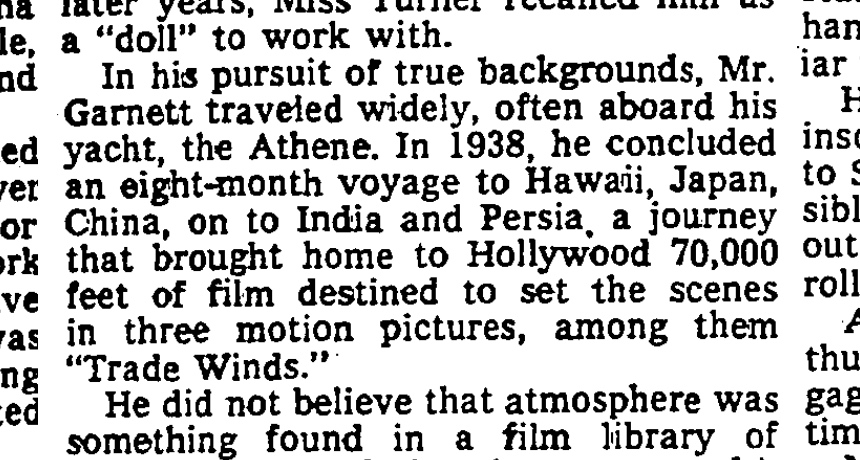
In the mid 1930s TALAYHA changed hands again. Her new owner, director and screenwriter Tay Garnett, changed her name back to ATHENE and shortened rig in anticipation of a serious cruise. According to his New York Times obituary, William Taylor ("Tay") Garnett was "a director whose scores of films made over half a century told stories of high adventure and action and starred many of Hollywood's best-known names" and his notorious dislike of stock "'process shots' designed to cover multitudes of scenes" lead him literally around the world aboard ATHENE in pursuit of authentic background footage for several of his movies. This extended voyage was the second of ATHENE's honeymoon cruises; it began in November 1935, shortly after Garnett's marriage to his second wife, Helga Moray. A two-part article in the October & November 1937 issues of Motorboating described the ensuing 28,000 mile, eighteen month around-the-world voyage in rich detail; you can read most of Part I here, and Part II here, courtesy of the Herreshoff Cagalogue Raisonné. The title is a bit misleading - ATHENE was never a "Cup Boat" - but it's a suitably "Hollywood" backstory for a burgeoning (if elderly, by Hollywood standards) starlet. Both articles make for a fascinating snapshot of a very specific moment in time and are well worth a read.
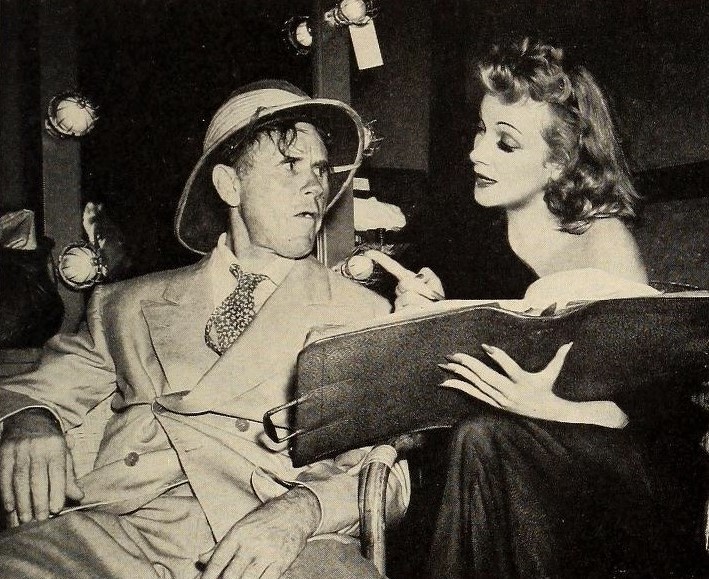
Perhaps the most delightful thing about ATHENE serving as a floating filming platform during that 28,000 mile voyage in the early 1930s is that, thanks to the internet, some of the film is still accessible to the modern viewer. The effect of projecting real footage captured in-situ in ports around the world onto a Hollywood set makes for some surprisingly convincing stagecraft. As Frank S. Nugent wrote for the New York Times after the 1939 premiere of "Trade Winds," one of three films that included clips shot during ATHENE's voyage, "Tay Garnett earned the distinction yesterday of being probably the first man in history with the temerity to invite 80,000,000 persons to pay to see the movies he took on a world cruise. Mr. Garnett went abroad a few seasons ago and, having a rough outline of a script, he shot doorways in Japan, barrooms in Indo-China, the race track at Singapore, a pier in Bombay, a fishing village in the Laccadives, a twisting street in pre-war Shanghai. Hollywood bridged the gaps, set up the process screen, placed Frederic March and Joan Bennett before it and tuned the sound-recording apparatus to the frequently humorous frequency of Dorothy Parker and Alan Campbell, who ride the kilocycles in tandem... The result of it all is 'Trade Winds,' which blew gently into the Music Hall yesterday and may be remembered by posterity as the process shot that went 'round the world..." ATHENE never appears the background of any of the shots, but knowing that she was the vehicle for the film crew all the way through may be reason enough for the true Herreshoff aficionado to sit through all 93 minutes of "Trade Winds".
Captain Nat was still alive while ATHENE was sailing around the world and knew about the voyage that the 35-year-old HMCo. vessel was undertaking. Author H.B. Warren wrote to Captain Nat in the fall and winter of 1935 with questions about several HMCo. boats that participated in the Honolulu Race, as he was preparing a history of the event. In one of these letters, he informed Captain Nat:
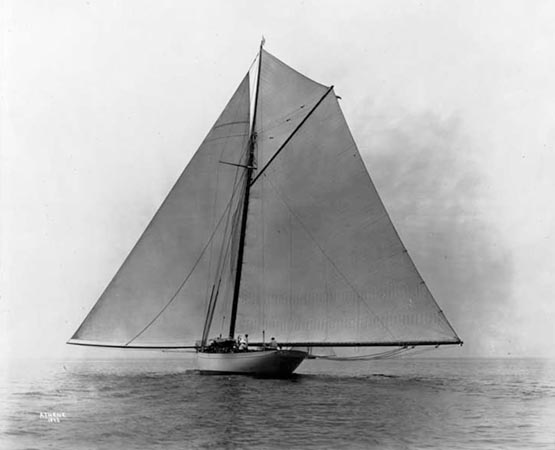
"The 'ATHENE' left Los Angeles on November 24th bound ultimately for Hong Kong. I believe her first stop will be Honolulu. Beyond Honolulu I do not know what route she will follow. I am told that her owner, Tay Garnett, a moving picture director and author, was not aboard. I think he plans to join her at Honolulu and make the trip from there on.
Her rig is quite small. The mainmast was reduced by almost half its length and a mizzen installed. She carries a rather large yard on the mainmast, but I think they will have trouble with it, because the braces led to the mizzen masthead, and as I did not see any backstays on the mizzen, I should think the strain might be rather heavy. I did not like the deckhouse they built on the forward deck either, but as I didn't go aboard, I don't know whether or not they cut any of the deck beams. I hope the old ship will come through all right, and imagine she will unless she runs into a typhoon, but in that case she would probably go down anyway, no matter what her condition. Those storms in the China Sea seem to be the real thing..."
Captain Nat may have heard of ATHENE's safe return to L.A. eighteen months later, but he died in 1938 before the "Trade Winds" premiere. According to his diaries, N.G.H. did go to the movies on a number of occasions between 1922 and 1931 with his second wife, Ann Roebuck, and various friends. It is amusing to imagine what he would have made of the Garnett films, though there is no record of his ever having seen one.
Post Script
ATHENE did make it back to the Atlantic after her round-the-world cruise, but not for long: she was lost on May 31, 1943 off the coast of Florida after a collision with the steam ship JOHN OWEN. At that time she was no longer owned by Tay Garnett and was serving as a cargo vessel, carrying badly needed wartime supplies between Havana and Miami - in this case, pineapples. The article that appeared in "Yachting" in October 1943 describing the collision incorrectly named the owner at the time of the accident, but is otherwise a sober and clear first-hand account of ATHENE's final days written by her temporary relief captain, Samuel Weintraub. Weintraub describes her last five voyages during which she was under his command, reporting that she was so fast they had to shorten sail at times to avoid arriving in port in darkness. On the very last voyage, at one point they let her have her way, "setting everything that would draw... at times she actually did twelve knots..." proving she was still a Herreshoff racehorse despite the cargo hatch and load of pineapples.
ATHENE was rammed by the JOHN OWEN about 5 am on May 31. Neither ship was running lights, as was wartime practice. ATHENE's captain reported she was hit broadside by the much larger steel vessel with such force she must have essentially been cut in half, "as if by a knife". She sank immediately. By the time the captain was picked up by the Chief Officer & six crew members of the JOHN OWEN in one of their lifeboats, most of ATHENE's crew were already in the lifeboat. Three of ATHENE's crew members were never recovered, and presumed lost. It was a tragic and unnecessary end to a vessel that had lead such interesting and varied lives under many owners, and had more than proved herself to be a versatile and seaworthy creature along the way.

This piece is for Claas van der Linde. Access to the MIT Museum Collection, the Halsey C. Herreshoff Collection and the Historic New England Stebbins Collection and the Library of Congress Detroit Publishing Collection are gratefully acknowledged; without them we would not be able to draw these threads together. With the exception of the design notebooks, all primary resource documents referenced in this post are indexed in the extraordinary Herreshoff Catalogue Raisonné - click here to explore ATHENE's page further - as accessed June 21, 2022. This piece would not have been even remotely possible without the Herculean and decades-long efforts cataloging, collecting and organizing data undertaken by the creators of the HCR.

